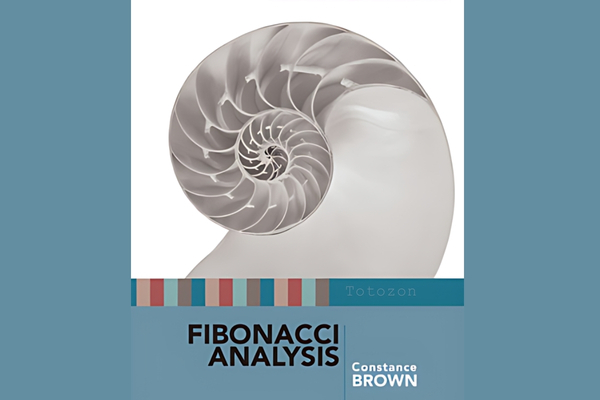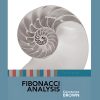-
×
 Deep Dive Butterfly Trading Strategy Class with SJG Trades
1 × $41.00
Deep Dive Butterfly Trading Strategy Class with SJG Trades
1 × $41.00 -
×
 SQX Mentorship with Tip Toe Hippo
1 × $23.00
SQX Mentorship with Tip Toe Hippo
1 × $23.00 -
×
 Compass Trading System with Right Line Trading
1 × $39.00
Compass Trading System with Right Line Trading
1 × $39.00 -
×
 The Indices Orderflow Masterclass with The Forex Scalpers
1 × $23.00
The Indices Orderflow Masterclass with The Forex Scalpers
1 × $23.00 -
×
 Butterfly and Condor Workshop with Aeromir
1 × $15.00
Butterfly and Condor Workshop with Aeromir
1 × $15.00 -
×
 The Best Option Trading Course with David Jaffee - Best Stock Strategy
1 × $15.00
The Best Option Trading Course with David Jaffee - Best Stock Strategy
1 × $15.00 -
×
 Options Trading & Ultimate MasterClass With Tyrone Abela - FX Evolution
1 × $54.00
Options Trading & Ultimate MasterClass With Tyrone Abela - FX Evolution
1 × $54.00 -
×
 Ultimate Trading Course with Dodgy's Dungeon
1 × $8.00
Ultimate Trading Course with Dodgy's Dungeon
1 × $8.00 -
×
 Trading Short TermSame Day Trades Sep 2023 with Dan Sheridan & Mark Fenton - Sheridan Options Mentoring
1 × $31.00
Trading Short TermSame Day Trades Sep 2023 with Dan Sheridan & Mark Fenton - Sheridan Options Mentoring
1 × $31.00 -
×
 W. D Gann 's Square Of 9 Applied To Modern Markets with Sean Avidar - Hexatrade350
1 × $23.00
W. D Gann 's Square Of 9 Applied To Modern Markets with Sean Avidar - Hexatrade350
1 × $23.00 -
×
 White Phoenix’s The Smart (Money) Approach to Trading with Jayson Casper
1 × $39.00
White Phoenix’s The Smart (Money) Approach to Trading with Jayson Casper
1 × $39.00 -
×
 Bond Market Course with The Macro Compass
1 × $15.00
Bond Market Course with The Macro Compass
1 × $15.00
Fibonacci Analysis with Constance Brown
$27.00 Original price was: $27.00.$6.00Current price is: $6.00.
File Size: Coming soon!
Delivery Time: 1–12 hours
Media Type: Online Course
Fibonacci Analysis with Constance Brown
Fibonacci analysis is a powerful tool in the arsenal of any serious trader, and no one explains it better than Constance Brown. Her insightful approach to this technical analysis method helps traders understand market movements and make informed decisions. Let’s dive into Fibonacci Analysis with Constance Brown and discover how this technique can enhance your trading strategy.
Understanding Fibonacci Analysis
What is Fibonacci Analysis?
Fibonacci analysis involves using key Fibonacci ratios to identify potential support and resistance levels in the market. These ratios, derived from the Fibonacci sequence, are 23.6%, 38.2%, 50%, 61.8%, and 100%.
The Origin of Fibonacci Ratios
Leonardo Fibonacci introduced the Fibonacci sequence in the 13th century, which later found its application in trading due to its natural occurrence in various aspects of life and the financial markets.
Constance Brown’s Approach
Who is Constance Brown?
Constance Brown is a renowned trader and author known for her deep expertise in technical analysis. She has revolutionized the way traders use Fibonacci analysis.
Her Unique Perspective
Brown’s approach to Fibonacci analysis incorporates multiple time frames and market contexts, providing a more comprehensive understanding of price movements.
Key Concepts in Fibonacci Analysis
Fibonacci Retracement
- What is it? A method used to determine potential reversal levels.
- How to Use It: Identify the high and low points of a significant move, then apply the key Fibonacci ratios.
Fibonacci Extensions
- Purpose: Predict future price movements beyond the current range.
- Application: Use Fibonacci ratios to project levels where the price might extend after a retracement.
Fibonacci Arcs and Fans
- Fibonacci Arcs: Circular arcs drawn from a trendline representing potential support and resistance levels.
- Fibonacci Fans: Diagonal lines radiating from a high or low point, used to identify potential support and resistance.
Applying Fibonacci Analysis in Trading
Step-by-Step Guide
1. Identify Key Points
- Determine the significant high and low points on your chart.
2. Apply Fibonacci Ratios
- Use your charting tool to draw the Fibonacci retracement levels between the identified points.
3. Analyze Market Reaction
- Observe how the market reacts to these levels. Look for signs of support or resistance.
4. Combine with Other Indicators
- Use other technical indicators like moving averages or RSI for confirmation.
Common Mistakes to Avoid
- Over-reliance: Don’t rely solely on Fibonacci levels; use them in conjunction with other tools.
- Ignoring Market Context: Always consider the broader market context and trend.
Advanced Techniques by Constance Brown
Multiple Time Frame Analysis
- Concept: Analyzing Fibonacci levels across different time frames to get a clearer picture of market dynamics.
- Benefit: Helps in making more informed trading decisions.
Dynamic Trading
- What is it? Adjusting your Fibonacci analysis based on real-time market movements.
- How to Implement: Continuously update your Fibonacci levels as new high and low points form.
Benefits of Using Fibonacci Analysis
Predictive Power
Fibonacci levels provide predictive insights into potential market turning points.
Risk Management
Helps in setting stop-loss and take-profit levels based on key support and resistance levels.
Enhanced Trading Strategy
Combining Fibonacci analysis with other tools can significantly improve your trading strategy’s effectiveness.
Common Challenges and Solutions
False Signals
- Challenge: Sometimes Fibonacci levels may give false signals.
- Solution: Always confirm with other indicators and market analysis.
Complexity for Beginners
- Challenge: New traders might find it challenging to apply Fibonacci analysis correctly.
- Solution: Practice and continuous learning are essential. Start with simple retracement levels before moving to more complex applications.
Real-World Applications
Case Study: Forex Trading
Fibonacci analysis is widely used in Forex trading to identify entry and exit points. For instance, traders use it to determine the end of a pullback in a trending market.
Case Study: Stock Market
In the stock market, Fibonacci retracement levels help in identifying potential buy or sell opportunities during market corrections.
Conclusion
Fibonacci analysis, as elucidated by Constance Brown, is an invaluable tool for traders. It provides a structured approach to understanding market movements and making strategic trading decisions. By mastering these techniques, traders can enhance their market analysis and improve their trading outcomes.
FAQs
1. What makes Constance Brown’s approach to Fibonacci analysis unique?
Her integration of multiple time frames and market contexts provides a deeper understanding of price movements.
2. Can beginners use Fibonacci analysis effectively?
Yes, but it requires practice and continuous learning to master.
3. How does Fibonacci analysis help in risk management?
It helps in setting precise stop-loss and take-profit levels, minimizing potential losses.
4. What are the common pitfalls to avoid in Fibonacci analysis?
Over-reliance on Fibonacci levels and ignoring broader market contexts are common mistakes.
5. How can I combine Fibonacci analysis with other trading tools?
Use it alongside indicators like moving averages and RSI for confirmation and a more comprehensive analysis.
Be the first to review “Fibonacci Analysis with Constance Brown” Cancel reply
You must be logged in to post a review.
Related products
Forex Trading
Forex Trading
Forex Trading
Forex Trading
Forex Trading
Forex Trading
Forex Trading
Forex Trading
Forex Trading
Forex Trading
















Reviews
There are no reviews yet.